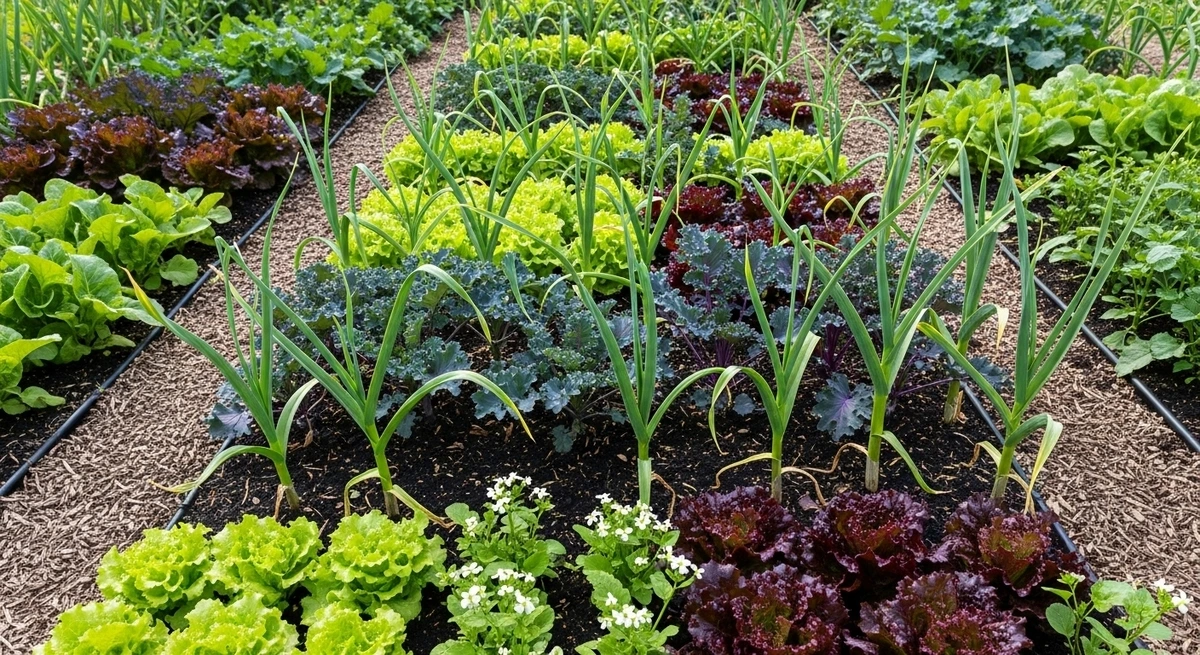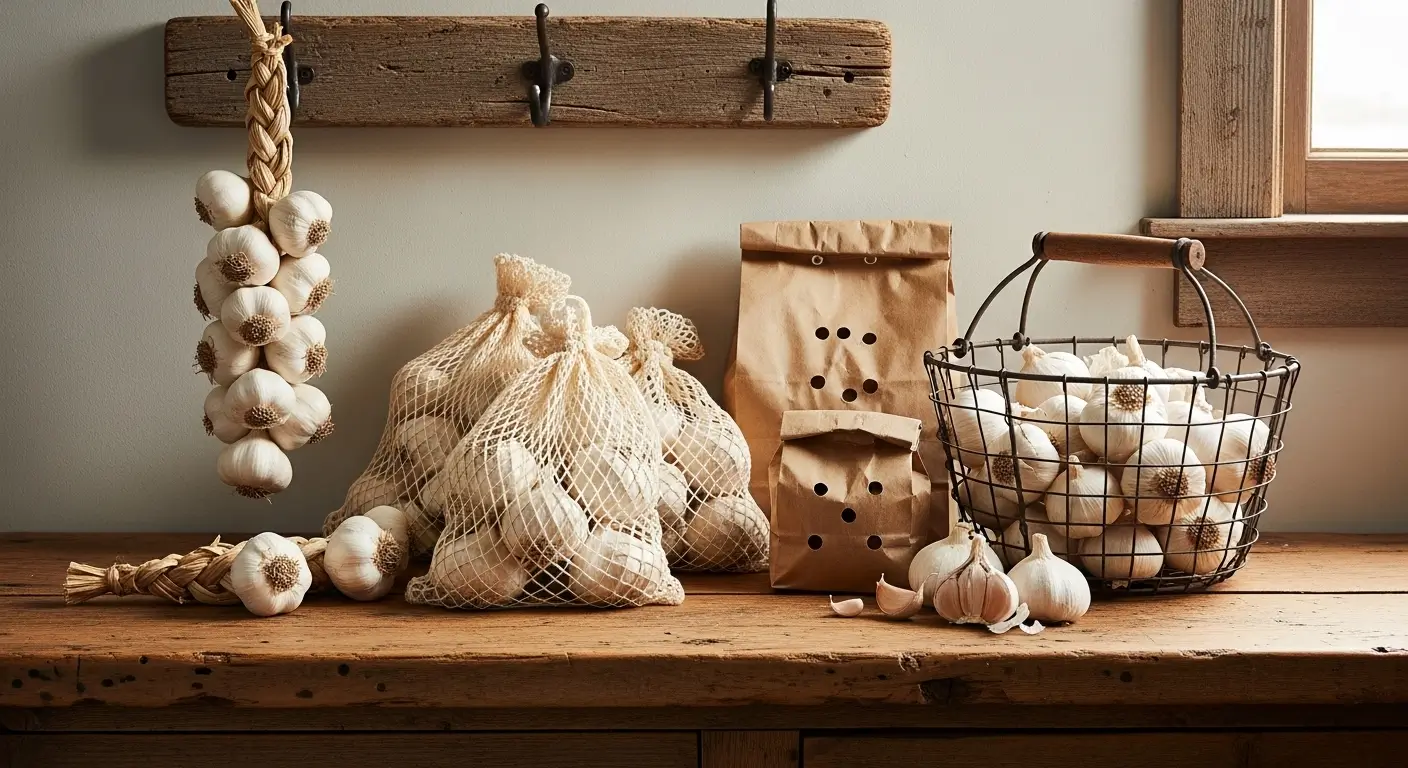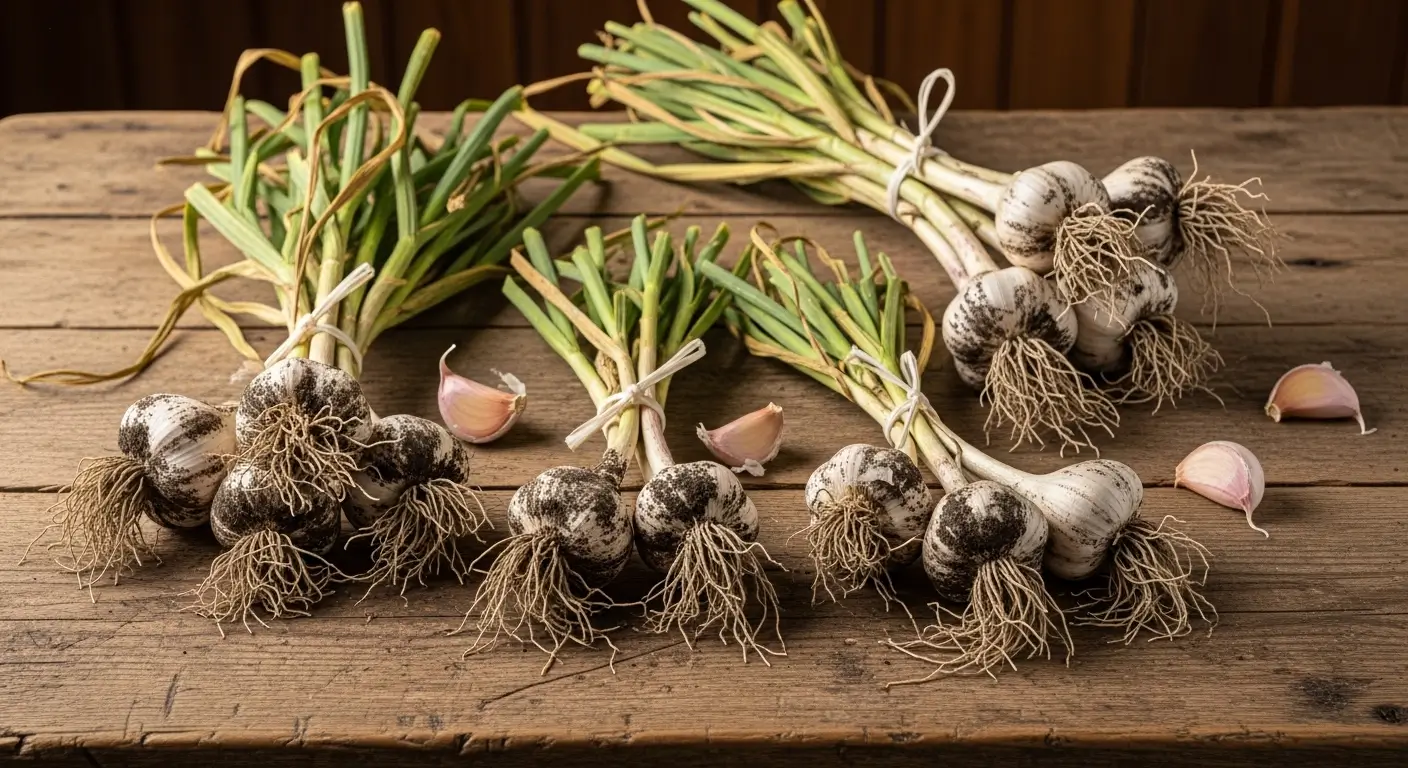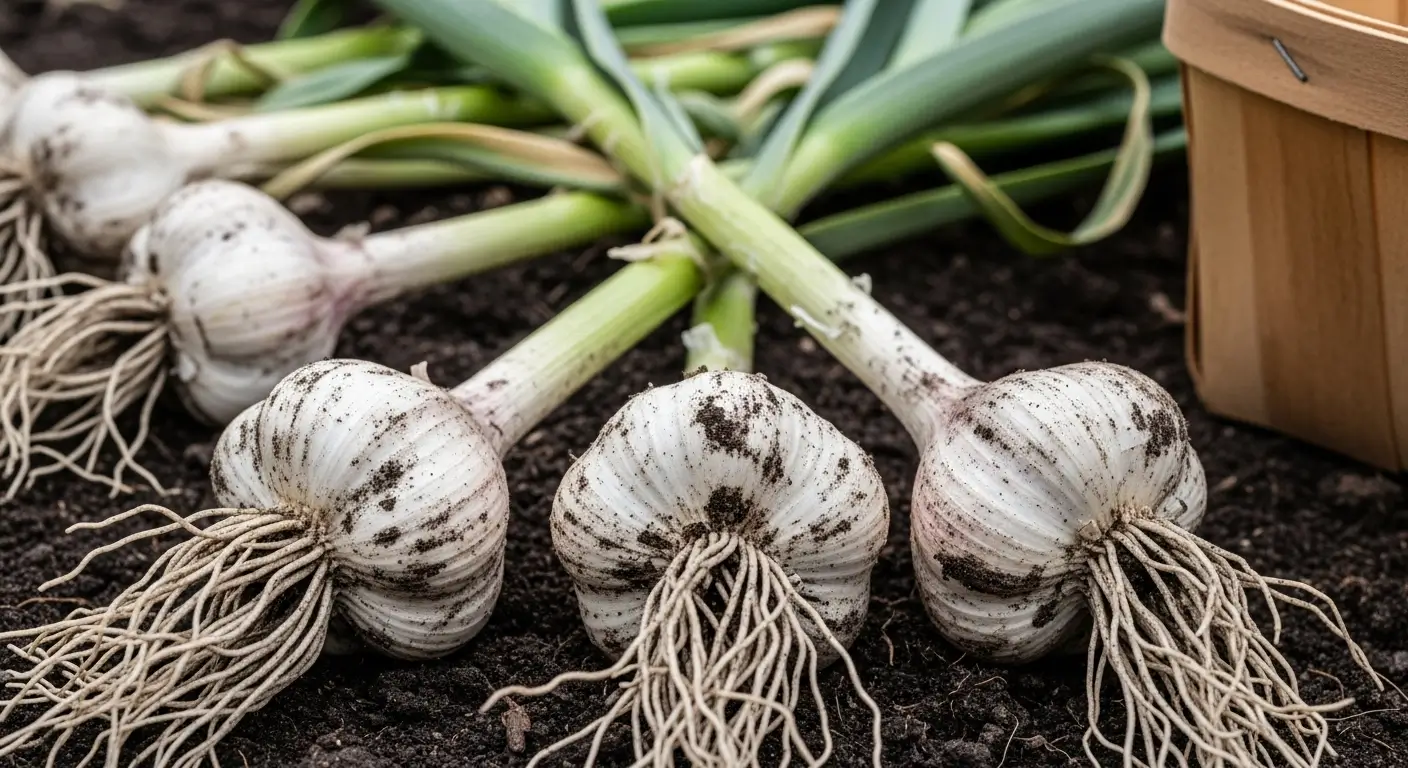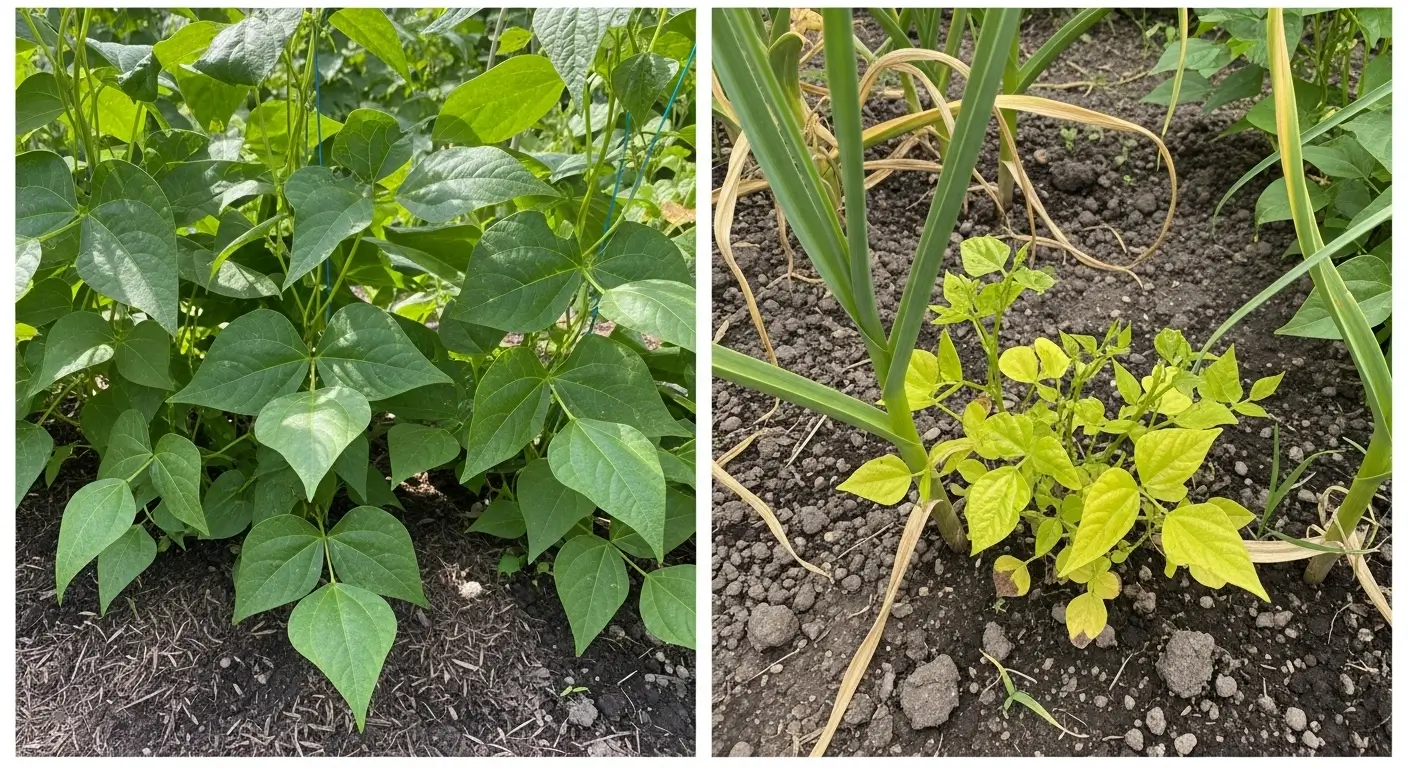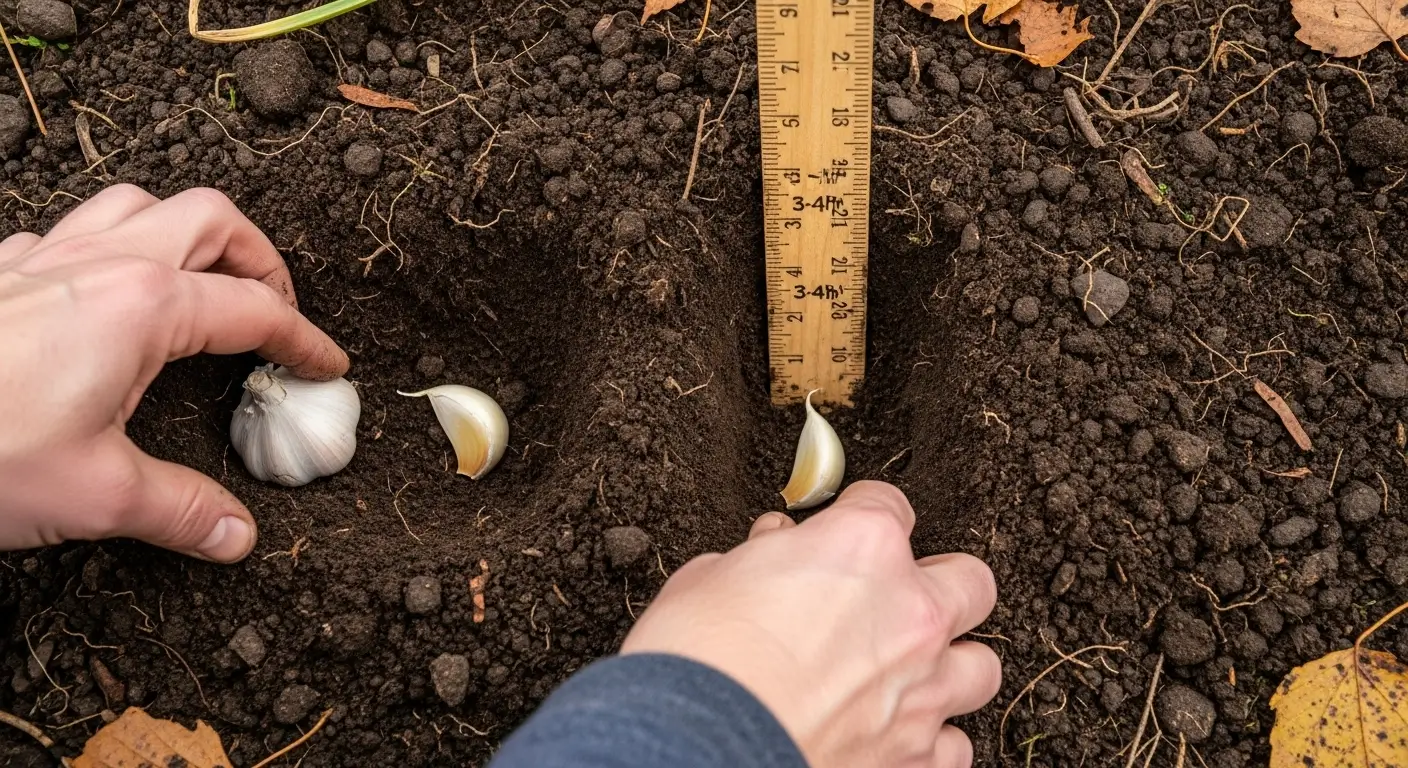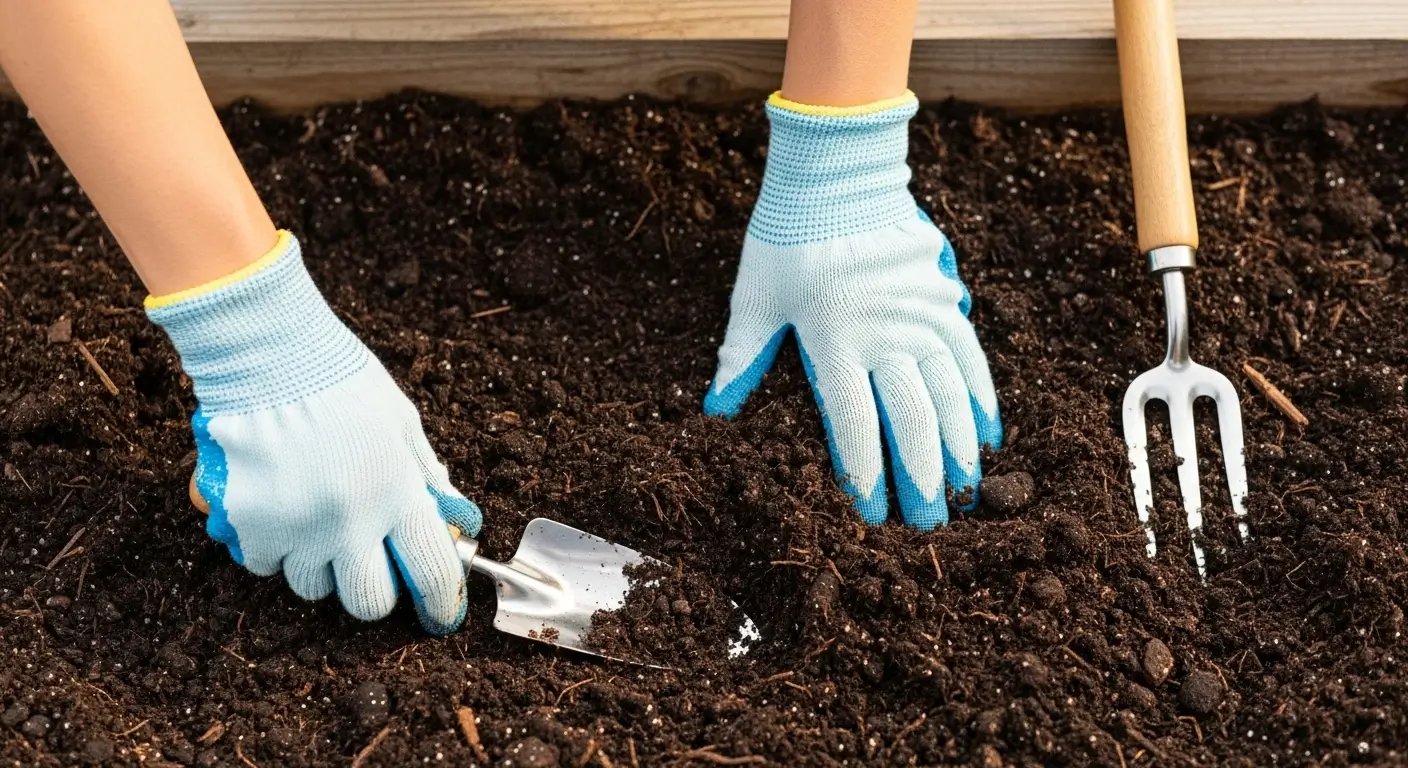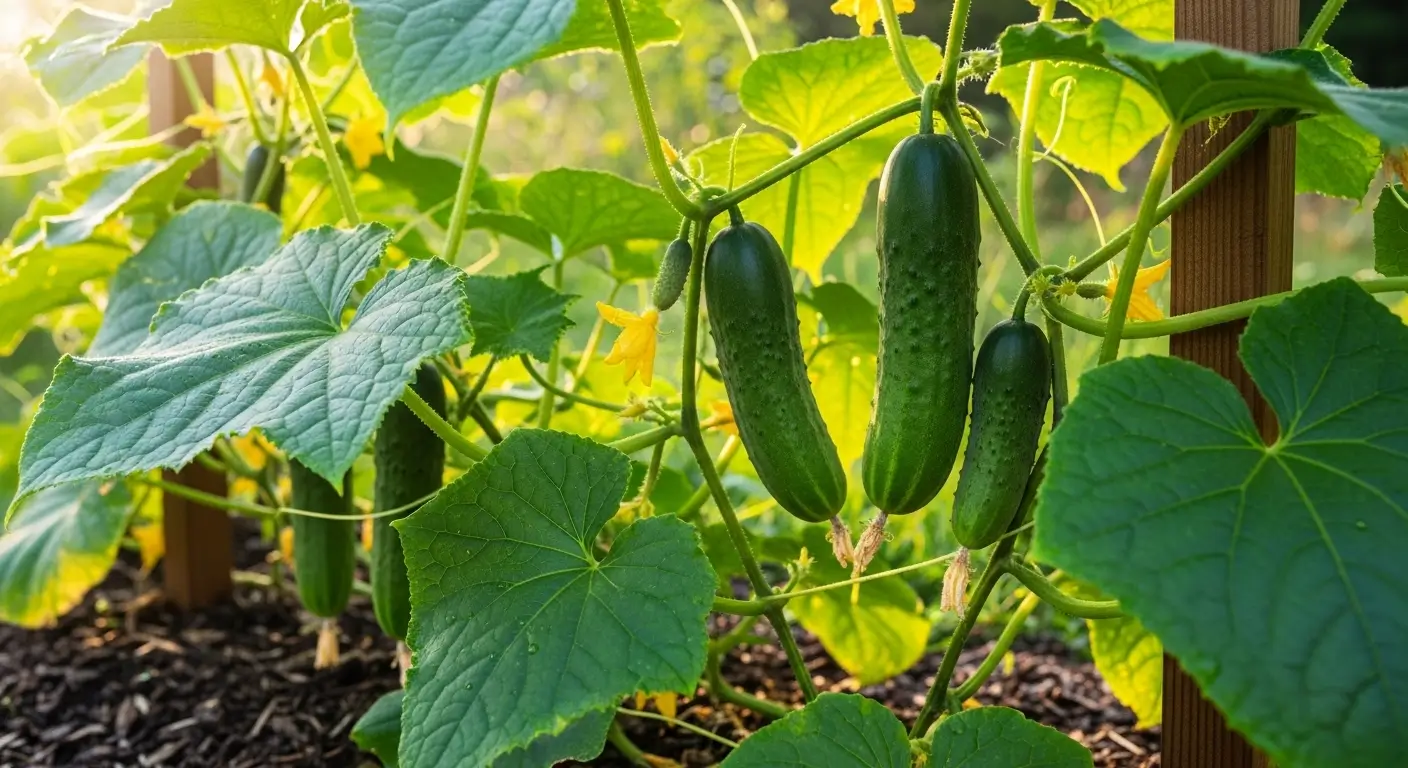Okay, so picture this: you’re out in your garden, staring at your garlic patch, and you’re like, “There’s gotta be something else I can cram in here, right?” I mean, I’ve totally been there! After messing around in the dirt for 15 years, I’ve figured out that garlic companion plants aren’t just about squeezing every last inch out of your garden space—they’re about creating this cool little plant community where everyone’s got each other’s backs.
So there I was, rookie gardener me, randomly shoving lettuce next to my garlic because they were both “cool weather plants” or whatever. But you know what? That random decision totally changed how I think about my whole garden setup. The garlic was basically playing bodyguard for my lettuce, keeping those annoying aphids away, while the lettuce was like a living blanket, keeping the soil nice and cool. It was honestly like watching the cutest plant friendship ever unfold right in my backyard.
Let me spill all the tea on what to plant with garlic—the wins, the epic fails, and all those “well, that was a learning experience” moments that taught me way more than I bargained for.
Table of Contents
Quick Takeaways: Best Garlic Plant Companions
Alright, before I get all chatty and lose you in the details, here’s the cliff notes version of garlic-friendly vegetables and herbs:
- The MVP companions: Cabbage family stuff (broccoli, kale, you know the drill), other onion-y plants, lettuce, spinach, and pretty much any herb you can think of
- The “nope, don’t even try it” list: Beans, peas, asparagus, and weirdly enough, parsley.
- Why this stuff actually works: Natural bug spray, happier soil, and you get way more food from the same space
- Timing is everything: Work with garlic’s crazy long growing season (we’re talking 8-10 months here!)
- Play nice with roots: Stick with shallow-rooted buddies that won’t fight with your garlic bulbs underground.
Why Companion Planting with Garlic Actually Works
When I first started gardening, I thought companion planting was just some old wives’ tale, you know? Then I kept watching my neighbor, Mrs. Chen, ‘s garden, absolutely killing it every single year with her strategic plant matchmaking, while mine was getting demolished by bugs and weird diseases. That’s when it hit me—this stuff is actually legit!
Garlic is basically the superhero of the garden world. All those compounds that make you cry when you’re chopping it up for dinner? Yeah, those same chemicals are like kryptonite to garden pests. Garlic constantly releases these sulfur-y compounds through its roots and leaves that bugs absolutely hate. I’ve watched this magic happen—my tomato rows that are buddied up with garlic consistently have way fewer aphids and spider mites than the ones flying solo.
But here’s what really blew my mind: garlic doesn’t just protect other plants, it actually makes the soil better, too! As those bulbs grow, they’re breaking up hard-packed dirt, creating better drainage and letting air get to the roots of neighboring plants. Plus, garlic’s got this pretty chill root system that doesn’t hog all the nutrients, making it the perfect neighbor for most veggies.
The Champions: Best Garlic Companion Plants
Brassicas: The Perfect Partnership
If someone held a gun to my head and made me pick just one plant family to grow with garlic, it’d be the brassicas hands down. We’re talking cabbage, broccoli, kale, cauliflower, Brussels sprouts—the whole gang. I’ve literally never had a bad season when I’ve paired these up.
Last spring, I did this thing where I planted my garlic rows with patches of cabbage and kale mixed in. The garlic was like a bouncer at a club, keeping those cabbage worms and aphids away from my precious brassicas—and trust me, those pests have been the bane of my existence in previous years. Meanwhile, those big leafy brassicas were doing their thing as living mulch, keeping my garlic beds consistently moist without me having to stress about watering every five minutes.
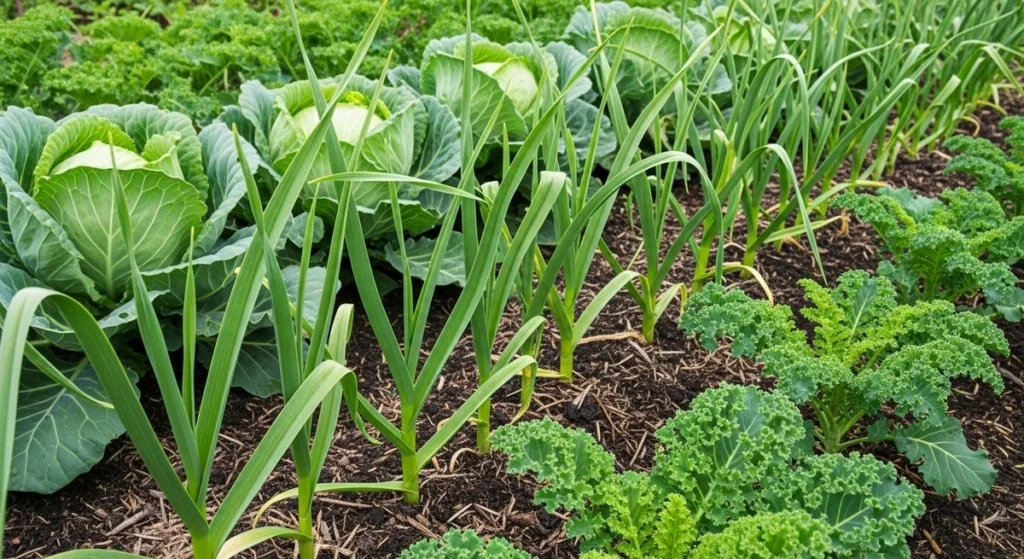
Pro tip that I learned the hard way: give your brassicas about 6 inches of breathing room from the garlic bulbs. I once planted them way too close together, and trying to harvest the garlic without destroying the cabbage roots was like performing surgery with oven mitts on.
Leafy Greens: Nature’s Living Mulch
Lettuce, spinach, arugula—these guys are absolutely perfect garlic plant companions, especially if you’re just getting started with this whole gardening thing. They’ve got these super shallow root systems that don’t pick fights with garlic for space or food, and they’re actually helping the garlic out by being natural weed blockers.
I’ve discovered that cool-weather greens are like the perfect dance partners because their growing schedule lines up beautifully with garlic’s early growing period. Plant some lettuce when you stick your garlic in the ground in late fall, and boom—you’ve got fresh salads all winter while your garlic is just chilling and building up its root system.
One of my all-time favorite combos is garlic with butter lettuce. The mild lettuce flavor actually goes really well with those garlic scapes I harvest in late spring, and they’re both ready to come out of the ground around the same time in my Zone 5b garden. It’s like they planned it that way!
Allium Family: Strength in Numbers
This one’s probably a no-brainer, but sticking different members of the onion family together creates what I like to call an “aromatic fortress” in your garden. Onions, leeks, chives, shallots—they all love hanging out with garlic.
I picked up this trick from this old Italian guy at my local farmers’ market. He goes, “In Italy, we say the allium family protects each other like siblings.” So I gave it a shot, planting alternating rows of garlic and onions, and holy cow—both crops looked absolutely amazing compared to my previous solo plantings.
The real bonus? This combo absolutely destroys common garden pests like carrot rust flies and onion maggots. I haven’t had a major pest problem in my allium section since I started doing this three years ago. It’s like having a pest-free zone without any of those nasty chemicals.
Strategic Companions for Different Garden Goals
For Pest Control: Herbs That Work Overtime
If you’re dealing with specific bug problems, certain herbs planted near garlic create this almost impenetrable force field. Basil, oregano, thyme—they don’t just taste amazing with garlic in your cooking, they’re also garden besties.
I stumbled onto this totally by accident when I ran out of room in my herb garden and just stuck some basil plants between my garlic rows. That whole season, I noticed way fewer aphids and whiteflies in that part of the garden. Turns out the combo of garlic’s sulfur stuff and basil’s aromatic oils creates this natural pest-repelling zone that bugs can’t handle.
Oregano deserves a special shoutout here. This tough little perennial spreads out really nicely as ground cover around garlic bulbs, choking out weeds while keeping ants and cucumber beetles away. Just a heads up—oregano can be a bit of a garden bully, so I’ve learned to plant it in buried containers to keep it from taking over the entire neighborhood.
For Soil Health: The Underground Helpers
Shallow-rooted plants like carrots and radishes are fantastic for loosening up the soil around garlic. Radishes are especially awesome because they break up hard-packed dirt, and they’re ready to harvest way before garlic needs all that space to itself.
I love planting radishes between my garlic rows in early spring. They’re outta there by late spring, right when the garlic bulbs are starting to size up and need more elbow room. It’s like having really helpful temporary roommates who actually improve the place before they move out!
Carrots work the same way; they take their sweet time growing up. I’ve found that those cute little quick-growing varieties like Paris Market carrots work best. They’re ready to harvest by early summer, giving garlic plenty of room to finish doing its thing.
🧄 Find Your Perfect Garlic Companions
Tell us your gardening goal and we’ll recommend the best companion plants!
What NOT to Plant with Garlic (Lessons from My Mistakes)
Let me save you from some of my epic gardening face-plants. Not every plant thinks garlic is the greatest thing since sliced bread, and boy, did I learn this through some spectacular failures.
The Bean Disaster of 2019
I was being all clever by planting pole beans near my garlic rows, thinking the beans would fix nitrogen that the garlic could use. Yeah… no. The beans grew like they were depressed, producing maybe half their normal yield. Garlic releases these natural chemicals that tell legumes to buzz off.
Same deal with peas. I tried snap peas as a cool-season buddy one year, and they just looked sad and pathetic all season long. They had this sickly yellow look despite having perfect growing conditions literally everywhere else in my garden.
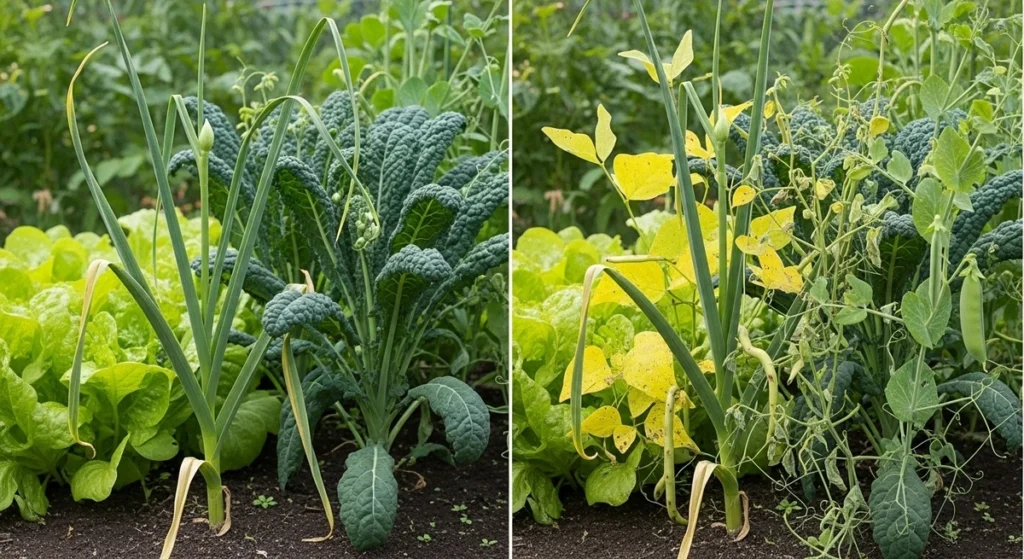
The Asparagus Experiment
This seemed totally logical—both are perennial crops that don’t need you digging around their roots every year. But apparently, asparagus and garlic are like those friends who compete for everything, including soil nutrients. Plus, garlic harvest time totally messes with asparagus production. I noticed my asparagus spears were way thinner and less impressive in areas close to my garlic.
The Parsley Puzzle
This one totally caught me off guard because parsley is usually such a chill, easy-going plant. But I kept noticing that parsley planted near garlic grows super slowly and doesn’t taste nearly as good. Garlic’s root chemistry somehow messes with parsley’s development, though honestly, I have no clue why.
Seasonal Planting Strategies for Garlic Companions
Fall Planting (October-November)
When I’m out there planting garlic bulbs in the fall, I also get their cool-season friends settled in. This is perfect timing for spinach, lettuce, and other greens that’ll give you something pretty to look at all winter and early spring snacks to boot.
I’ve got this system worked out where I plant garlic in rows about a foot apart, then fill all the spaces between with different winter-hardy lettuce varieties. The garlic gives just enough protection to help these greens survive even when winter gets really nasty here in my Zone 5b garden. Check your local USDA hardiness zone guidelines to determine the best planting times for your area.
Spring Additions (March-April)
When the soil starts warming up in spring, I throw in some quick-growing buddies like radishes and arugula. These guys are done and dusted before the garlic needs that full space for bulb development. It’s like this perfectly choreographed garden dance. Each plant takes center stage when conditions are just right, then gracefully exits when it’s time for the next performer.
Summer Management (May-July)
By late spring, I’m harvesting those curly garlic scapes and getting ready for the main garlic harvest. This is when I usually plant any heat-loving herbs like oregano or thyme that’ll get established before the garlic comes out of the ground.
One trick I absolutely love is planting basil transplants in late spring between garlic rows. By the time I’m pulling garlic out in July, the basil is perfectly positioned to take over that space for the rest of the summer. It’s like a really well-planned garden relay race!
Maximizing Your Garden Space with Strategic Companion Planting
This is where companion planting gets really fun—you can basically double what you’re getting out of your garden by thinking smart about timing and space.
I use what I call the “succession buddy system.” When I plant garlic in the fall, I immediately plant quick-growing friends that’ll be harvested before the garlic needs full space. Then I’ve got a second wave of companions ready to go in spring, followed by summer crops that move in after garlic harvest.
Here’s how one of my 4×8 raised beds plays out:
- Fall: Plant garlic with winter lettuce
- Early spring: Toss in radishes between garlic rows
- Late spring: Plant basil transplants, harvest lettuce and radishes
- Summer: Pull garlic, let basil take over the whole space
This system gives me four different harvests from the same patch while keeping the soil healthy and bugs under control all season long. It’s like getting four meals out of one grocery trip!
Practical Tips for Success
After years of trial and error (okay, lots of error), here’s what actually works in my garden:
Space is way more important than you think. I learned to give garlic at least 4-6 inches of personal space around each bulb. Companions can party in the areas between rows, but crowding the bulbs themselves makes them way smaller and sadder.
Think about when you’re harvesting stuff. The best companions are either out of there before garlic harvest (like radishes) or planted after you pull the garlic (like late-season basil). Trust me, trying to harvest multiple crops from the same space at the same time is just asking for chaos.
Pay attention to how deep the roots go. Garlic bulbs hang out about 2-4 inches down, so shallow-rooted friends work best. Deep-rooted plants will pick fights with your developing bulbs.
Keep an eye on watering needs. Garlic likes steady moisture but hates soggy feet. Pick companions with similar water needs so you’re not constantly trying to figure out who needs what.
Creating Your Perfect Garlic Companion Garden
Ready to design your own garlic companion paradise? Start small and build up your confidence with tried-and-true combos before you get all experimental.
If you’re starting out, I’d totally recommend beginning with garlic and lettuce—it’s practically foolproof and you get fresh salads all season. Once you see how awesome this works, throw in some radishes for spring harvest, then maybe try basil for summer fun.
Suppose you’ve been gardening for a while. In that case, you can get fancy with complex combinations that include multiple brassicas, herbs, and succession plantings. The trick is keeping good notes about what works in your specific climate and soil situation.
Just remember that growing garlic successfully is the foundation for any companion planting strategy. If you’re new to the whole garlic thing, nail down the basics first, then add friends as you get more confident.
And if you’re working with limited space, growing garlic in containers opens up tons of possibilities for creative companion combinations on patios and balconies.
Conclusion: Building Garden Relationships That Last
After all these years of getting my hands dirty, I’ve started thinking of companion planting less like filling space and more like setting up good friendships. Each plant brings something special to the party—garlic offers protection and soil improvement. At the same time, its buddies provide living mulch, pest diversity, and way more food throughout the season.
The cool thing about garlic companion plants is that they create this more resilient, productive garden ecosystem. Instead of battling nature with chemicals and crazy amounts of work, you’re working with natural plant relationships to make this beautiful harmony in your growing space.
Start with one or two proven combinations this season. Pay attention to how your plants react, jot down notes about what works, and slowly expand your companion planting experiments. Trust me, once you see the difference it makes in how healthy your plants are and how much food you’re getting, you’ll never go back to having plants live alone.
So what’s your experience been with companion planting? Have you stumbled across any weird plant partnerships that totally surprised you? I’d love to hear about your wins (and your epic fails—those teach us way more anyway!) in the comments. Let’s build this awesome community of gardeners sharing stories and learning from each other’s adventures!
Garlic Companion Plants – Frequently Asked Questions
What are the best companion plants for garlic?
The best garlic companion plants include brassicas like cabbage, kale, and broccoli, leafy greens such as lettuce and spinach, herbs like basil and oregano, and other alliums including onions and chives. These plants benefit from garlic’s natural pest-repelling properties while providing living mulch and maximizing garden space.
What plants should not be grown with garlic?
Avoid planting beans, peas, asparagus, and parsley near garlic. Legumes like beans and peas are stunted by garlic’s allelopathic properties, asparagus competes for similar nutrients, and parsley grows poorly and has reduced flavor when planted close to garlic.
When should I plant garlic companion plants?
Plant cool-season companions like lettuce and spinach when you plant garlic in fall. Add quick-growing crops like radishes in early spring, and plant heat-loving herbs like basil in late spring after the last frost. Time plantings so companions are harvested before garlic needs full space for bulb development.
How much space should I leave between garlic and companion plants?
Give garlic bulbs at least 4-6 inches of clear space around each bulb. Plant companions in the areas between garlic rows rather than directly next to individual bulbs. This prevents competition for nutrients and makes harvesting easier without damaging neighboring plants.
Do garlic companion plants really help with pest control?
Yes, garlic companion plants provide excellent natural pest control. Garlic releases sulfur compounds that repel aphids, spider mites, and other common garden pests. When combined with aromatic herbs like basil and oregano, this creates a natural pest-repelling zone that protects the entire garden area.
Can I grow garlic companions in containers?
Absolutely! Container growing works well for garlic companion planting. Use large containers (at least 12 inches deep) and pair garlic with shallow-rooted companions like lettuce, chives, or small herbs. This method is perfect for patios, balconies, or small space gardening.
